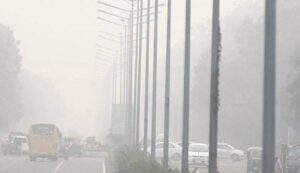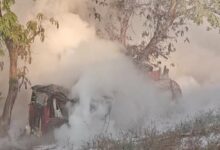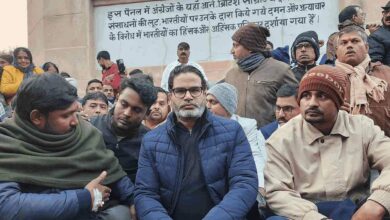Chandigarh currently battling the worst air quality, AQI at 354
Chandigarh: Due to its dangerously high Air Quality Index (AQI), Chandigarh is now experiencing some of the worst air quality in the nation. At 7 AM on Wednesday, November 13, Chandigarh recorded an AQI level of 354, which was higher than the 349 reading the day before.

Since early Tuesday morning, the city has been engulfed in thick haze and fog, which has worsened the already declining air quality. Residents felt a noticeable cold in the air for the first time this season, while the fog made visibility dangerously low. The sun has been hidden behind the dense haze for the last six days, and visibility at Chandigarh’s international airport has decreased to only 200 meters. Everyday life has been greatly impacted by the near-permanent overcast caused by the mix of pollution and fog.
In order to shield themselves from the poisonous air, residents have been seen donning masks while out on morning walks. The situation is concerning, according to Dr. KK Sharma, a retired doctor from Sector 16 Hospital, who said that a heavy layer of fog and pollution seemed to be covering the whole city. In order to prevent respiratory problems, he highly recommended that everyone going outdoors in the early morning or evening use a mask. “The current levels of air quality can present significant health risks, especially for individuals with pre-existing conditions,” Dr. Sharma said.
There are many factors contributing to the city’s poor air quality. Since the monsoon season did not provide enough respite, the situation has become worse due to a lack of rainfall. The haze has also been further exacerbated by the extensive burning of agricultural stubble in neighboring Punjab. The health hazards have been exacerbated by the trapped pollutants near the ground caused by the lower winter weather, which usually results in less air movement.
The municipal government has used anti-smog cannons to spray water on roads and trees in Sector 37 and other areas to counteract the pollution. Although the goal of these actions is to lessen airborne particulate matter, experts believe that longer-term, more comprehensive solutions are required to address the underlying causes of pollution.
Additionally, local officials have been working to increase public knowledge of the risks associated with pollution. The situation is still dire in spite of these initiatives, and both locals and medical professionals are urging quick action to solve the city’s worsening pollution problem.





